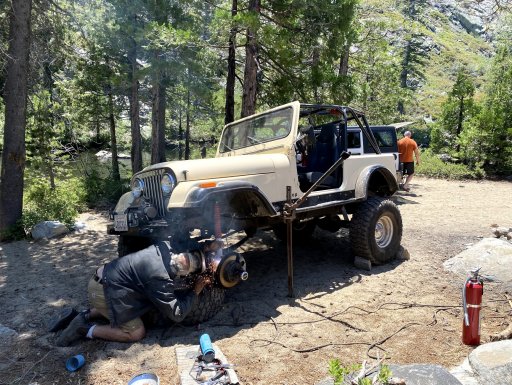I just finished building one. Here's the thread
DIY Welder. I added a speed control to and this thread made me do a final update. Overall it works very well. Welding with a spool gun and shield wire takes a slightly diffrent technique than regular mig.
I can also build alternator welders. It takes a bit more skill. Your required to remove the alternators voltage regulator and change it to an external type. If your alternator is computer controlled its much easier. My TJ only required me to tie into the computer control wire. All of my older vehicles required me to move the regulator.
Then there's the two battery and arc rod type. This is the simplest. I did this before I started building alternator welders. The big issue here is, you have uncontrolled current. A bit hot for 1/4 metal , too hot for thinner.
The difference between them.
Alternator welders you can buy have two diffrent designs. The type I made worked well but require a bit of automotive skill to build and is like this one
Premier. The second type I cant remember the name but is very expensive to buy and works as well as my welding machines.
The basic design I made puts down some real nice beads. The output is controlled by engine rpm. I used a lever and cable mounted to my control box, under the hood. Most of my welding was done about 1500 rpm. Starting the arc is a bit tricky because unlike a welding machine, an alternator doesn't put out power, it has to be drawn from it. You have to drag the rod quickly to start the arc. It took a while to get the technique right. Until you do, you ruin a few rods sticking them to the metal.
Spool gun. Spool gun takes up a little more room then the alternator welder. The requirement is a dual battery system. The one I just made is similar to this one.
Ready Welder. There's another one out there (
Karnage welder). This is a welder and a case with a 24 volt lithium battery installed. Self powered. I haven't seen it in person but it looks nice if you have the room for it. Looking at the web sites. As far as I can tell neither of these has a wire speed control like mine. Its not really needed but the weld comes out nicer.
Battery welder. Simple, takes up less room but the current is a bit much. I used this type for a couple of years. Everyone will tell you to run it with three batteries. Don't, the output is way too high and two works better for field welding.
The only reason I didn't build an alternator welder on my cruiser is I converted it to a high output 6 phase. I produce 150 amps at idle, 275 at 1500 rpm. That's way too much for most metal's your field welding.
If you want, I can draw out a diagram for any of the ones I've built.














